Having unsightly zits on your breasts can be undesirable, and it’s no wonder why. But what causes clogged pores on breasts, and what can be done about it? In this post, we’re taking a look into what exactly causes clogged pores on the breasts and how you can clean your breasts to prevent breakouts and scarring. Ready to learn more? We thought so!
How Do I Get Rid of Clogged Pores on my Breasts?
There are many ways to get rid of clogged pores on your breasts–but be advised that the process may not be easy.
Breast acne can occur for a variety of reasons. From sweat to genetics, having bumps show up anywhere on your skin is likely to be bothersome and leave you looking for answers.
But narrowing down the reason why you have breast acne is half of the battle!
Once you can understand why your breast acne keeps cropping up, you’ll be better equipped to know how it should be tackled. The following are some common reasons clogged pores of breasts occur:
- Sweat
- Tight-Fitting Clothes
- An Ill-Fitting Bra
- Not Washing After Working Out or Other Vigorous Activity
- Using Irritating Products on Your Skin
- Using Pore-Clogging Lotions and Soaps
- Leaving Your Hair Greasy or Dirty
- Wearing Unlaundered Clothing
- Genetics
In order to get rid of unsightly bumps on your breasts, consider using a face soap that is meant to target acne on your breasts. This will banish bacteria and work to clear your skin on your breasts the same way it would on your face.
Also, be sure to gently exfoliate no more than once a week. Over-exfoliating can lead to exasperation of the issue.
Lastly, you’ll want to make sure that you pinpoint and work to resolve whatever it is that may be causing the skin on your breasts issues. This might mean switching up lotions or trying different body washes. Do this until you find a soap and lotion that you like, and that is preferably non-comedogenic.
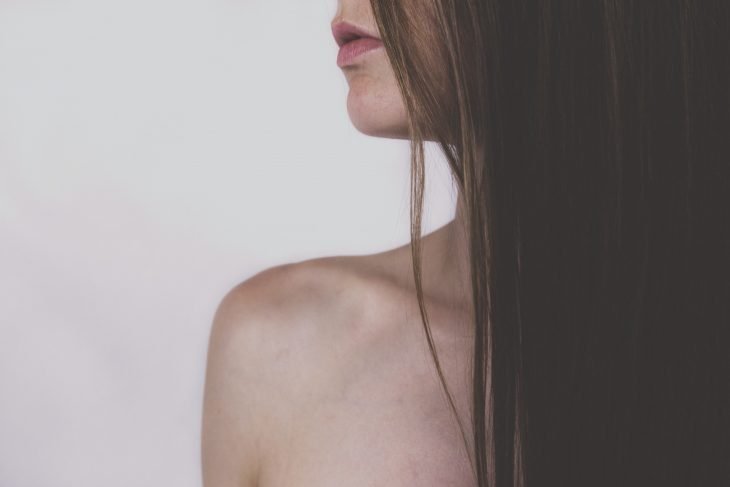
What Are These Pimple-Like Bumps on My Breast?
Bumps on breasts that resemble pimples may simply be acne or they may be something a little more sinister.
In some cases, bumps that suddenly form on the breast can be indicators of cancer. But don’t worry. Your typical white or blackhead isn’t usually the type of pimple associated with breast cancer. Rather, breast cancer bumps will appear as a rash or dimpling of the skin and may feel hot and sore at the sight.
If you have bumps that appear this way on the skin covering your breasts, be sure to contact your local doctor, immediately.
What Do Breast Pimples Look Like?
Breast pimples that are acne-related can look and feel a lot like the pimples you’d get on your face. They can be white (filled with pus) or they can appear as blackheads. They can also be swollen, firm, and feel tender to the touch much like large pimples that would appear on your face.
No matter what, do your best to resist the urge to pop your pimples. While this may feel satisfying at the moment, it will likely lead to unsightly scarring that will be difficult to get rid of down the road.
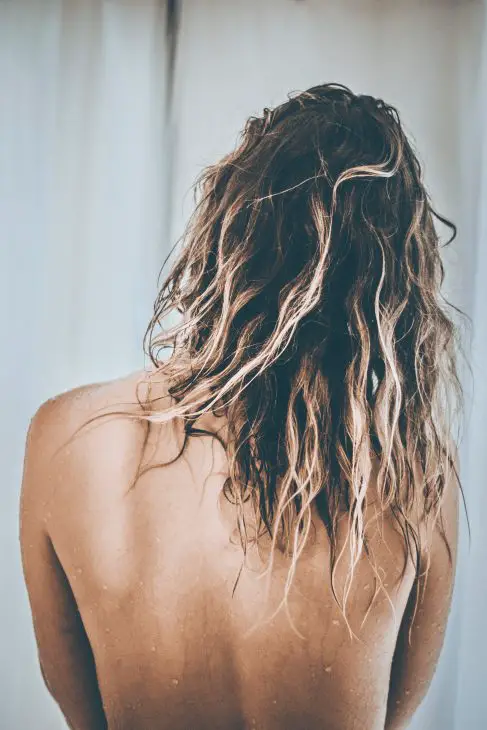
Are Pimples on Breast Normal?
Pimples on breasts can be totally normal. But there are cases when breast pimples are a cause for concern. For example, in some breastfeeding women, bumps on the breast can be an indicator of an infection, such as a yeast infection. In other cases, it could be a sign of breast cancer.
The important thing is to pair the appearance of breast pimples with other symptoms of the ailment you are suspecting. If the symptoms seem to match up, then it is certainly worth the trip to the doctor’s office to get checked out.
You’ll also want to pay attention as to whether or not these pimples look like traditional acne pimples or not. If they don’t, and if they don’t respond to treatment, see your local healthcare provider right away.
Is It Bad to Pop Pimples on Your Breast?
The reason we wouldn’t recommend popping pimples on your breasts is the same reason it isn’t recommended that you pop pimples on your face. Not only will you likely smear bacteria and cause other pimples to form, but you’ll also scar your skin.
If you thought the acne itself was unsightly, imagine having scarred skin covering your breasts that will take time to fade! Thus, it is better to try the hands-off approach and simply use cleansers intended for acne on the face on your breasts to help clear up any breakouts you may experience.
How Long Do Breast Pimples Last?
How long you can expect to see acne lingering on your breasts will depend on the cause of the breast acne as well as what you do about it.
For example, acne caused by genetics will likely linger and will require ongoing use of facial cleansers and acne treatments to clear up. Acne caused by diet, ill-fitting clothes, sweat, or other circumstances will stick around until the offending habit is eventually changed.
Thus, it is difficult to give a definitive answer on how long breast pimples last because the answer will vary for everyone.
Why Are There Whiteheads on My Nipples?
Whiteheads can occur on your nipples just like they can occur on any other area of your body. But sometimes, the whiteheads on your nipples aren’t “whiteheads” at all– at least not in the traditional sense. Rather, they are the naturally occurring oil that sits in your Montgomery glands that keep them lubricated.
Nothing about this is abnormal or anything to be concerned about. You should refrain from popping them or squeezing out the sebum as this could damage your nipple and potentially lead to infection.
How Do I Get Rid of the White Bumps on my Nipples?
White bumps on your nipples can be cleared up in a variety of ways. But again, it’ll depend on what’s causing them in the first place.
If the white bumps on your nipples are simply the result of clogged pores and aren’t a sign of underlying infection, then you may be able to get rid of nipple bumps by cleansing your breasts with a gentle cleanser meant for acne.
You can also apply heat to enlarged Montgomery glands that have turned into pimples, as this is known to decrease the size of them and help with ingrown nipple hairs.
When using a cleanser to nip breast acne, be sure not to use anything too harsh. Some cleansers that are intended for acne may strip the skin and may contain a variety of harsh chemicals. Because the skin on your breasts is delicate, this might irritate your skin, causing more pain, and potentially, more bumps.
If the white bumps on your breasts are particularly tender, don’t look like traditional acne, and aren’t responding to treatment, be sure to notify your doctor.
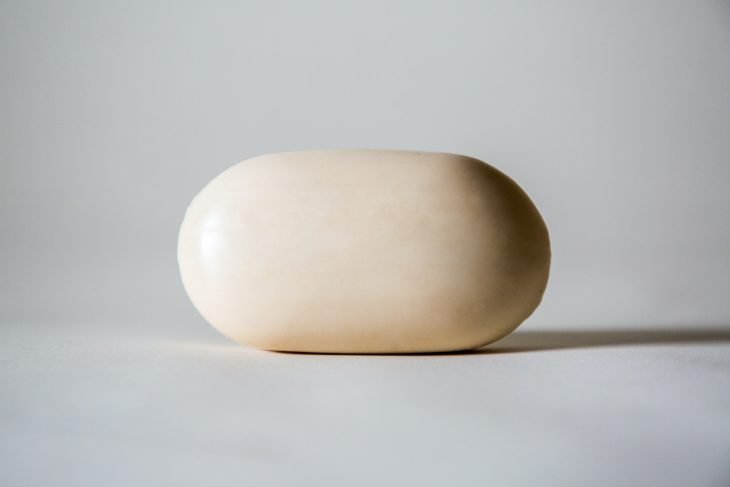
How Do You Open Clogged Pores on Nipples?
Opening clogged pores on your breasts or nipples will be similar processes, however, you’ll want to be more careful about how to treat acne on breasts.
That’s because skin on the breasts can be much more delicate than the skin on your face, and as a result, you may notice irritation associated with using certain products.
Still, following protocol like taking a hot and steamy shower, exfoliating, applying a gentle cleanser, and making sure to completely dry your breasts before dressing are a good start. Doing this will open pores and will work to banish pre-existing acne.
You should also be sure to watch the type of material your bra, shirts, and blouses are made of. Be sure that the material is moisture-wicking or is made of a breathable fabric such as cotton. This aids in the prevention of clogged pores to thereby prevent future acne.
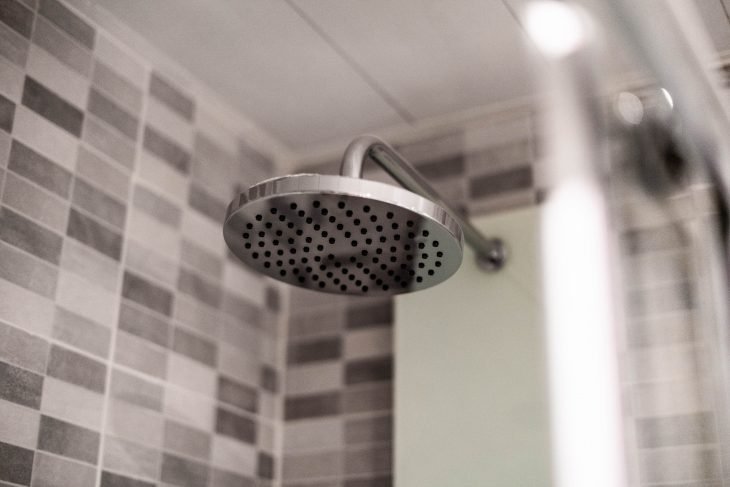
Breastmilk Soap
As it pertains to breast acne, did you know that breast milk soap is actually good for pimples? It’s true! If you are a breastfeeding mama, you may have noticed that you have excess breast milk at times that you aren’t sure what to do with. This happens a lot, especially for moms that pump and store a lot of breastmilk in the freezer.
So, what can be done with leftover breast milk? Many ladies love making breast milk soap. Not only is it a great way to prevent breast milk from going to waste, but due to its immunological properties, it offers numerous benefits to the skin and body. In fact, it is precisely this reason that breast milk is the number one recommended milk to be offered to infants under 12 months of age.
But most people don’t know the benefits of breast milk beyond feeding a baby!
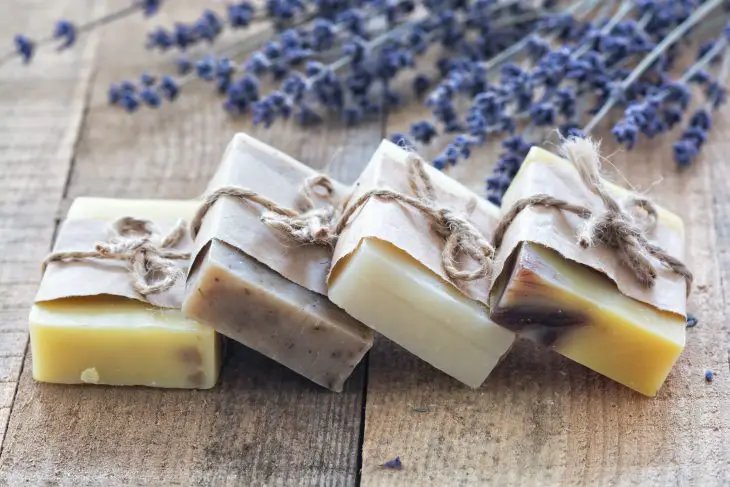
How to Make Breast Milk Soap
To make breast milk soap, you’ll want to first do your research. Creating soap of any sort will require certain supplies and ingredients, and you’ll want to make sure you have these handy before getting started.
For beginners, we recommend you use the following:
- Silicone Soap Molds
- Melt and Pour Soap Base
- Essential Oils
- Dye (optional)
- Breast Milk (of course!)
Method for Creating Breast Milk Soap
- Melt Your Soap Base
Once you’ve gathered your supplies, it is time to start making your soap. You’ll start by melting your melt and pour soap base. This can be done using a double boiler or in the microwave. No matter which method you choose, be sure to melt the soap gently to prevent any bubbles from forming. Bubbles and foam that form will be difficult to remove, so keep the heat low.
- Stir Continuously
Once your soap base has been melted, carefully stir in your defrosted breast milk. Stir continuously until incorporated.
- Add Fragrances
Then, add your fragrances and colorants. Be sure to keep sensitive skin needs in mind when choosing what types of colorants and fragrances you wish to use.
- Avoid Fragrances & Colorants For Babies
If you plan to use this soap on your baby’s skin, we recommend not adding any colorants or fragrances at all– this includes essential oils— as this could irritate your baby’s delicate skin.
Breast Milk Soap Recipe
To make your own breast milk soap, try following this recipe:
You will need:
- 1 Cup Thawed Breast Milk Per Batch
- Silicone Soap Molds
- Melt and Pour Soap Base (Diced into 1-Inch Cubes)
- Essential Oils (Optional – Not Recommended For Baby Soap)
Directions:
- Melt a portion of your melt and pour soap base in the microwave at short intervals. You can do this with half of your soap base at 10-15 second intervals. This will keep your soap from bubbling up and ruining the look of your soap.
- Once the melt and pour soap have melted completely, go ahead and mix in your cup of breast milk with a rubber spatula. Make sure that your breast milk has come to room temperature before mixing.
- Before pouring your mixture into the silicone molds, consider adding any dye, essential oils, or other additions you want added to your soap now.
- Place your molds on a flat and portable surface, i.e. a cutting board or baking sheet. Then pour the soap mixture into the molds of your choice. You can choose to use silicone molds, or you may just use a muffin or cupcake tin. Some people even use clean milk cartons or juice cartons to form their soap into a square shape. It’s really up to you and how you want the finished product to look.
- Carefully lift your flat surface –cutting board or baking sheet with the molds on them– and place them on a level surface in your freezer. Leave them there for two hours or until fully set. The amount of time it takes to set may differ depending on your freezer and on how big your soap is.
And that’s it!
Use the breast milk soap anytime your skin needs a little extra TLC. But remember that these soaps do melt quickly.
Some recommend you keep the soaps frozen for a couple of days in the freezer before using them as this can expand their longevity. Otherwise, you may expect your breastmilk to last a few baths. This depends on how vigorously you lather them and the size of your soap.
How to Make Breastmilk Soap – Other Matters
Breast Milk Soap Recipe Without Lye
The aforementioned recipes are formulated without lye! Simply follow the instructions above for a customized, moisturizing, rich soap that was safely made at home.
Breast Milk Soap DIY
As you can see, breast milk soap is easily made at home. The toughest part is gathering your equipment. After all, most people may not have melt and pour soap bases and silicone molds on hand. Still, these items are relatively inexpensive to purchase and will last for a while. Thus, making breast milk soap DIY is both easy and fun!
Mothers Milk Soap
Remember, making breast milk soap is quick, easy, and fun! For a walkthrough on how to make our own breast milk or “mother’s milk” soap at home, be sure to reference the segments above. Making your own breast milk is a convenient way to use any leftover breast milk you have, especially if you have a freezer full of stocked milk you don’t have much use for.
FAQs
Breast milk soap can be beneficial for a variety of skin ailments. These include diaper rash, acne, and eczema. Babies, who often suffer from dry skin, also benefit from breast milk soap; just be careful not to add dye or fragrances that have the potential to burn, sting, or otherwise damage your baby’s sensitive skin.
There are risks associated with selling breast milk soap, however, there aren’t currently any laws regulating it. Still, the FDA is warning those wishing to use the milk of donors, particularly when purchased online, of the potential risks.
We’d recommend that if you wish to sell breast milk soap you make the soap with the breast milk of your customers, rather than selling breast milk soap made of your own milk.
Not long! Depending on how vigorously you lather, a soap made in a miniature silicone mold may only last one bath! But bigger soaps may last you a while longer, but not nearly as long as a traditional soap might.
The jury is still out on whether or not breast milk made using the melt and pour method expires. To be safe, we recommend storing your soap in the freezer and taking it only when ready to use. You can then refreeze your milk soap, place it wrappers in the fridge, or simply use it up within a couple of days. The other option is to make a breast milk soap made with lye which in turn will be unlikely to present hazards.
Clogged Pores on Breast and Breast Milk Soap Go Hand-in-Hand!
While clogged pores and zits on the breasts can be unsightly, using gentle cleansers like those used on the face, or even breast milk soap, can help eliminate your acne woes.
Consider making your own breast milk soap. Or, if you aren’t breastfeeding, using a gentle cleanser on your breasts that is typically intended for acne on the face.
Here’s to clear skin!
Related posts for you:
Lynn
Lynn is a freelance writer, a wife, and a mother of two beautiful kids. Lynn started Infant Empire with the aim of making parenting easier for fellow mums and dads. She believes the parenting tips provided here will be of great help to all parents.Recommended Reading
Top 7 Best Maternity Leggings not see through for work
it is usually difficult to find the best maternity leggings not see through, perfect fit, comfortable, and makes you feel and look great.
Top 7 Best Nursing Tanks For Large Breasts (2022 Reviews)
Nursing tanks are not very common in the market so nursing moms face challenges when choosing the best nursing tanks for large breasts...
Oat Milk For Breast Milk Supply
In this article, we will explore why oatmeal and oat milk are often considered beneficial when it comes to breast milk production.
Epsom Salt For Clogged Ducts
By combining Epsom salt with warm water, you may be able to get relief from your clogged ducts in as little as a few hours.
Spectra Pump Settings
If you’ve recently purchased a new Spectra pump, you may be wondering how best to use the pump so that it fits your specific needs.
Can Pregnant Women Drink Hot Chocolate?
A lot of cozy caffeinated drinks have gotten a bad rep, so you may be wondering, “Can I drink hot chocolate while pregnant?”

Leave a Reply